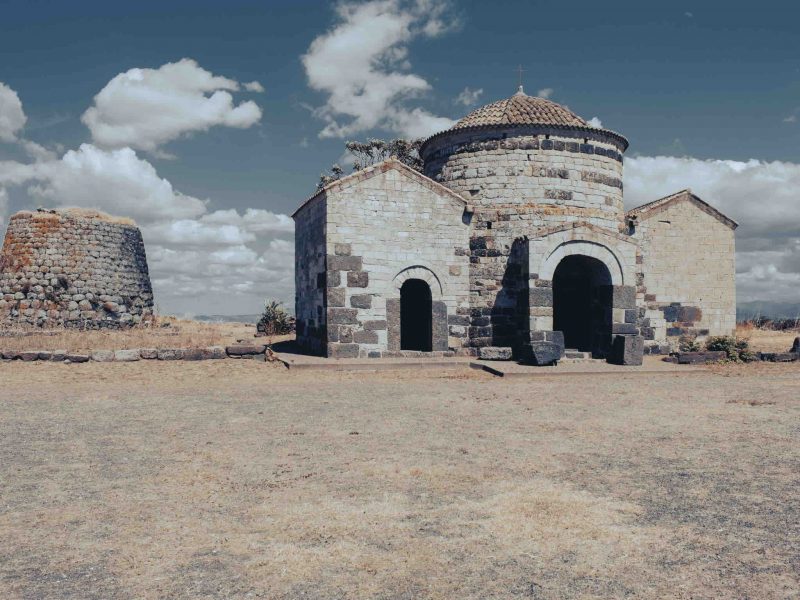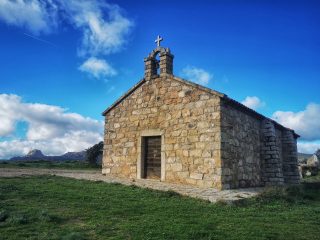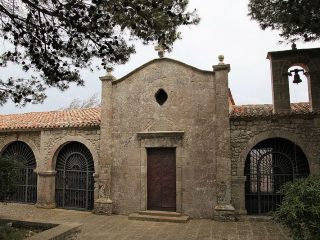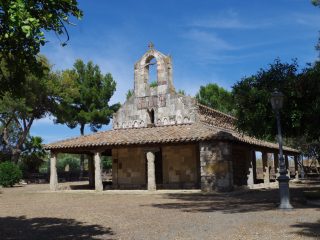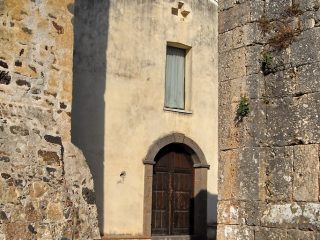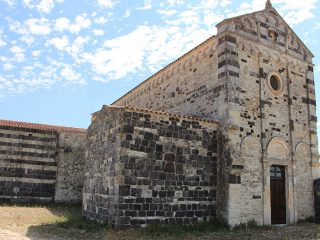It stands on the ruins of Nuragic structures still visible with the presence of the Nuraghe of the same name with holy well standing behind it. The complex is proof of the sacredness of the place down through the ages.
Built in the first half of the IX century, it is one of the most important examples of Late Medieval archaism in the island’s Byzantine tradition.
It has a circular central unit with larger dimensions and cupola, and two side ones with pitched roof; the layout reflects that of late Romanesque and Byzantine times of the cellae trichorae. Each chamber ends with an apse, the central one being larger in size and housing the altar.
The entire structure is two-tone achieved with the use of basalt and limestone ashlars.


